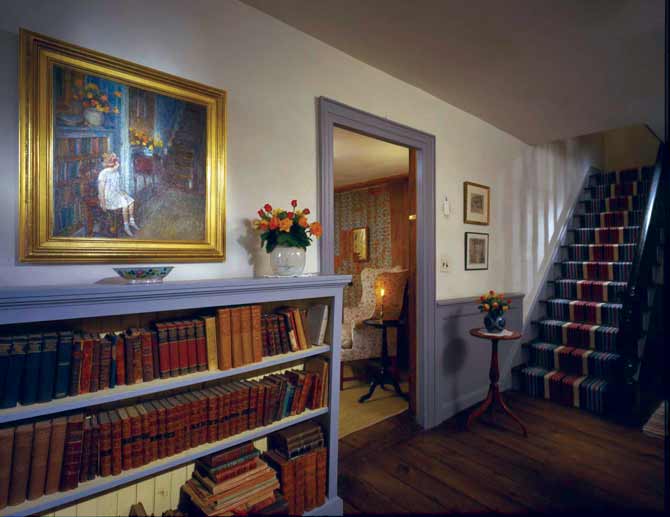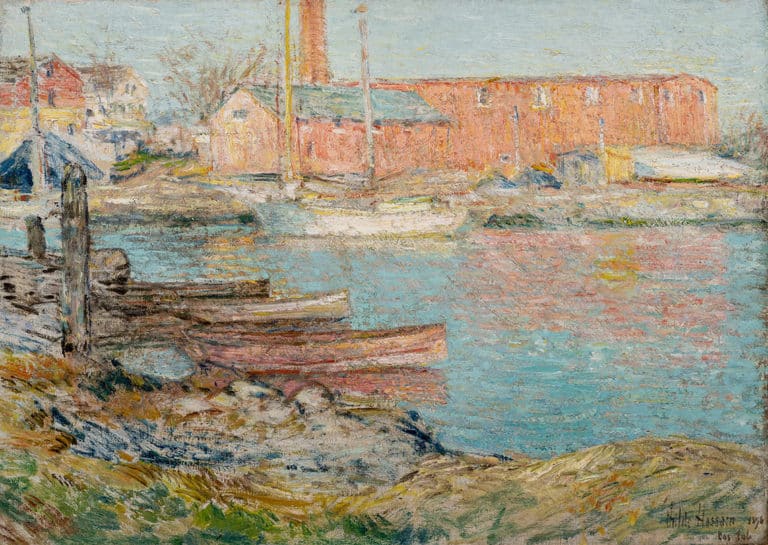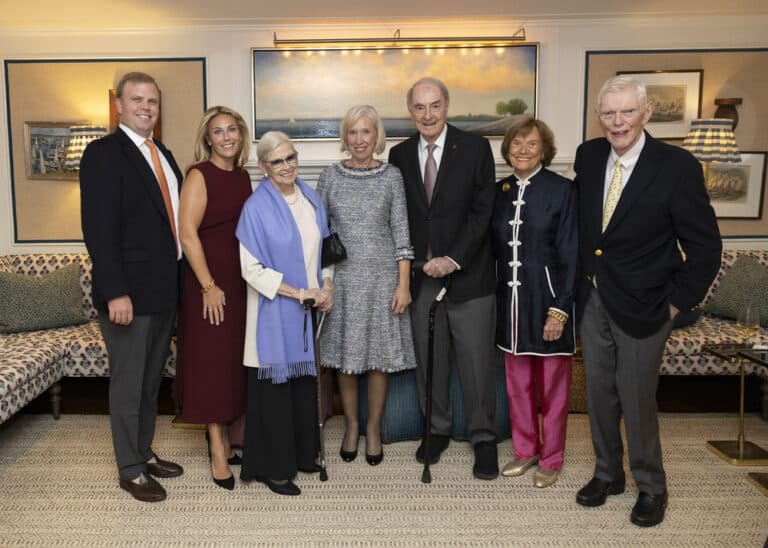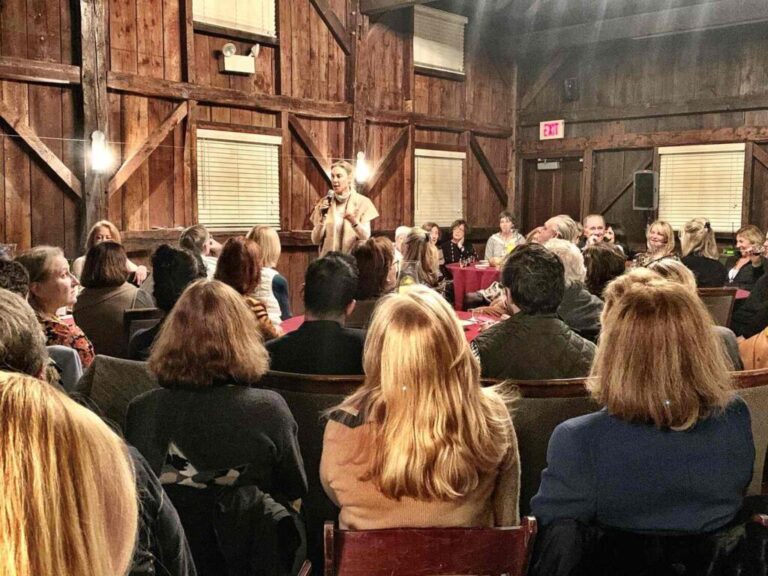Cos Cob Art Colony artists were influenced by the Colonial Revival, a movement that inspired nostalgia for America’s colonial past. Many affectionately referred to the Holley Boarding House as ‘the Old House,” and its colonial history and architecture served as inspiration on many levels.
“The shining brass knocker upon the broad front door, … the steep pitch of the rear roof and the massive chimney, all tell their story of long ago.”
Visitors entered through the front hall, whose colonial-era wainscoting “Dutch” door, wide plank flooring, circa 1850 staircase, and eclectic mix of Victorian and colonial furnishings were both charming and, in the case of artist Childe Hassam, ultimately became subject matter. The front hall appears much as it did in 1912 when Childe Hassam painted Clarissa MacRae sitting in front of the bookcase. When the Historical Society set out to recreate the Art Colony rooms, this painting was an important source for understanding how the front hall looked at the time. Across the hallway, there is a painting of Clarissa’s twin sister, Constant MacRae.
About the MacRae Family
In 1900, a young, New York artist named Elmer MacRae, who studied with artist John Twachtaman, married the Holley Boarding House owners’ daughter, Emma Constant Holley. Together, the Holley and MacRae families ran the boarding house and fostered the Cos Cob Art Colony well into the early twentieth century. The MacRaes’ twins, Clarissa and Constant, were born in 1904, and the girls are featured in works throughout the house.
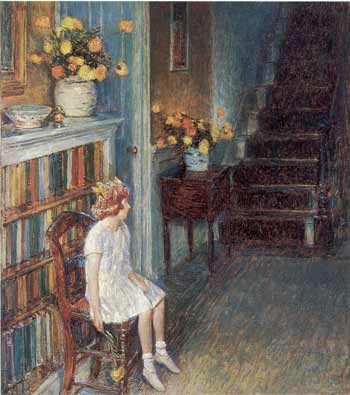
Childe Hassam (1859-1935) is one of the most well-known American impressionist painters. Hassam frequented the Cos Cob art colony from 1896 to 1916 and was inspired by the New England landscape and the old Holley House, which he often portrayed in his paintings. In Clarissa, he features one of the MacRae twins in addition to the front hall of the Holley House.
American impressionism, based on an artistic movement which started in France, utilized broad brushstrokes and vibrant colors, and emphasized the use of light. These characteristics are exhibited in Elmer MacRae’s Constant Feeding the Ducks. Many impressionist painters preferred to paint en plein air, or in the open air, where they could embrace the natural light. This had become easier by the end of the nineteenth century with the invention of the collapsible zinc paint tube. Artists visiting the Holley House often set up their easels on the landscape surrounding Cos Cob Harbor, including MacRae who painted Constant Feeding the Ducks, which features one of his twin daughters, on the grounds of the boardinghouse.
Before moving to Cos Cob, Elmer MacRae was a student at the Art Student’s League in New York City. The League was a membership organization for artists, many of whom traveled to the Holley House in the 1890s to take classes from John Twachtman (1853 – 1902). Known as a “painter’s painter,” Twachtman, a Greenwich resident, was well respected by his fellow artists and students. He became an important figure in the art colony and encouraged his students to try new approaches, such as alternating oils with watercolors and pastels. After Twachtman’s death in 1902, MacRae, who had a talent for organization, helped maintain the continuity of the art colony.
1. The Historical Society of the Town of Greenwich purchased with funds from Ann K. Arnold, Mr. and Mrs. Harris J. Ashton, Louis C. Baker, Bankers Trust Co. Connecticut Ltd., Mr. and Mrs. Edward H. Bragg, Jr. Martin Edelston, Mr. and Mrs. Thomas M. Evans, Mrs. Agnew Fisher, Mr. and Mrs. Everett Fisher, Mr. and Mrs. Robert B. Goergen, Mr. Brooks Hamoffman, Mr. and Mrs. Frank G. Lyon, Mr. and Mrs. Peter Malkin, Mrs. John Mayer, Mr. and Mrs, Russell S. Reynolds, Jr., Stolt Parcel Tankers Inc. Mr. and Mrs. Edwin Thome, Mr. and Mrs. Hugh B. Vanderbilt, Mr. and Mrs. David W. Wallace, Bernard and Jean Yudain, 1995.03
